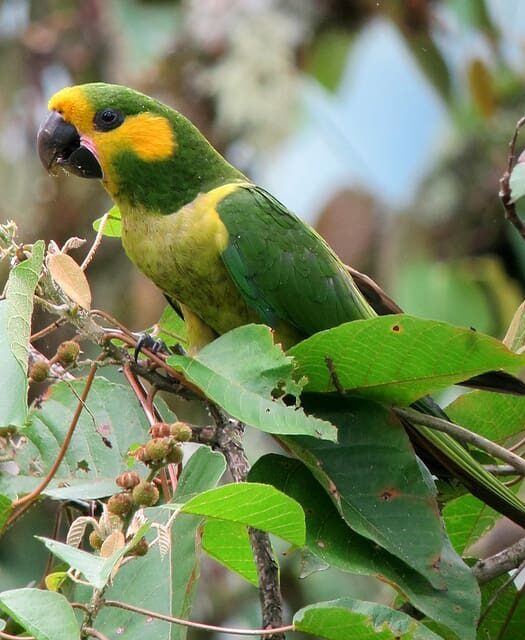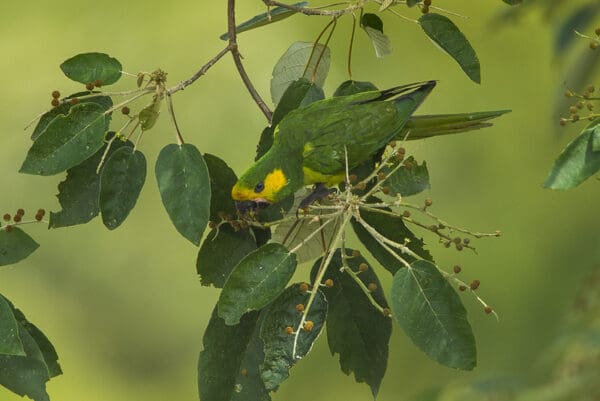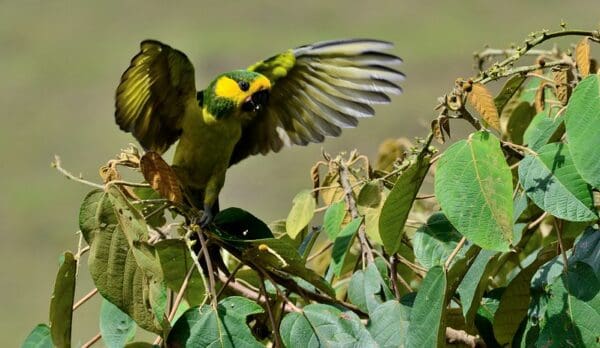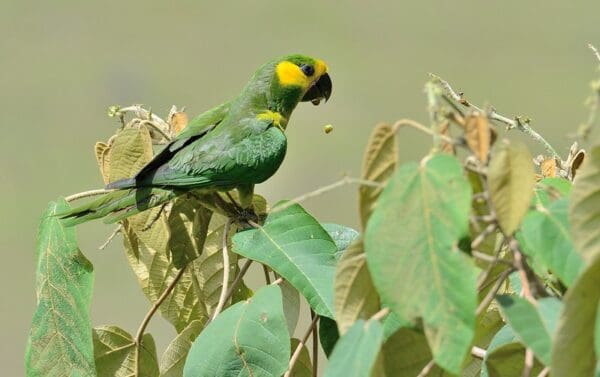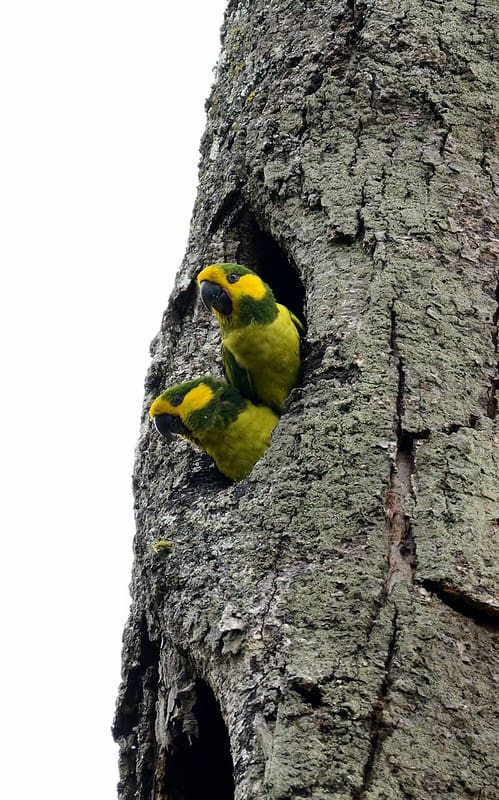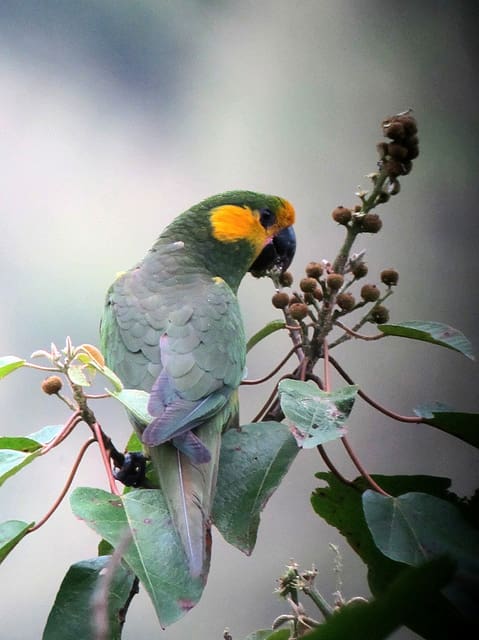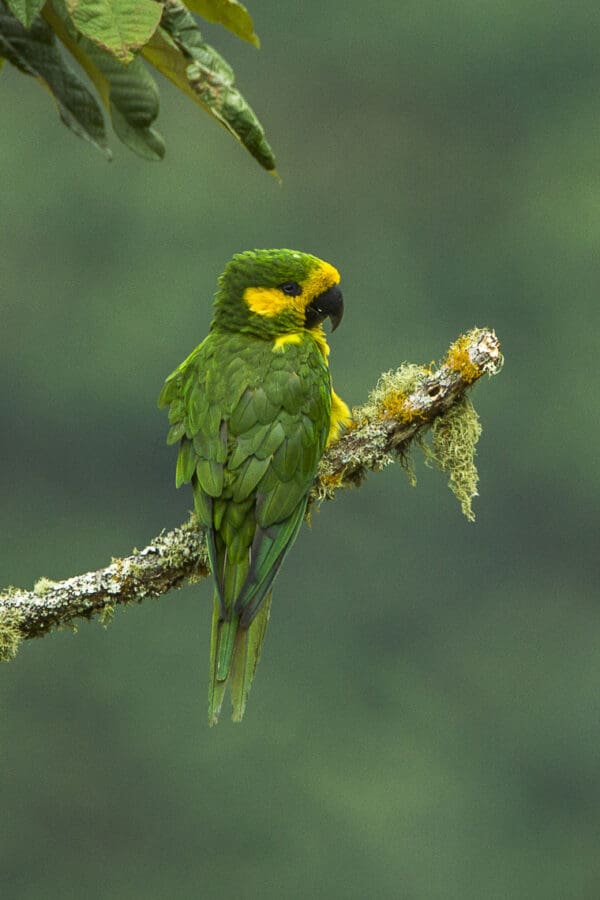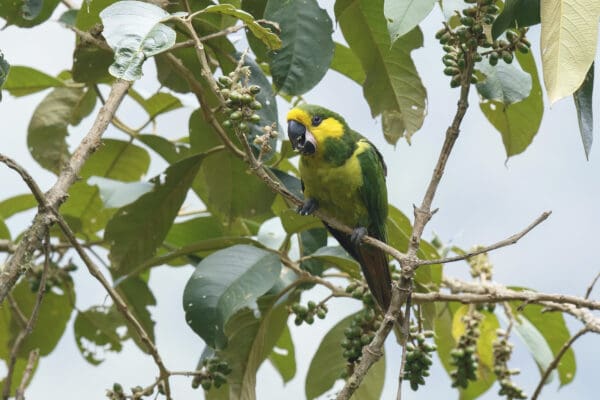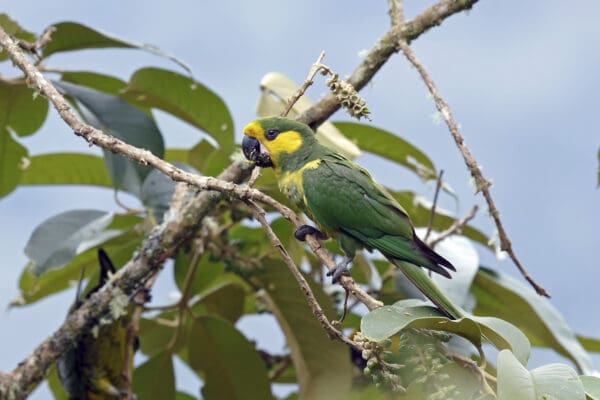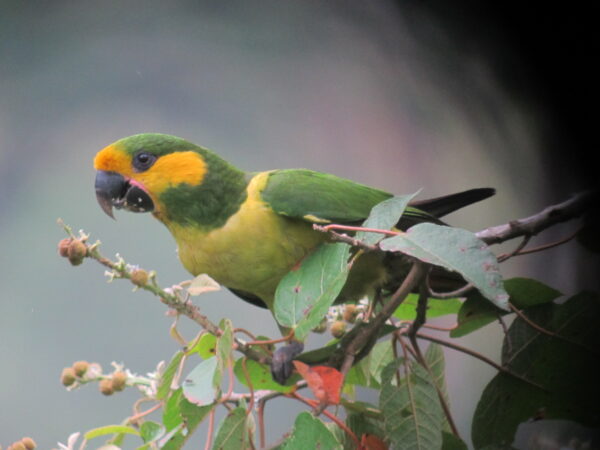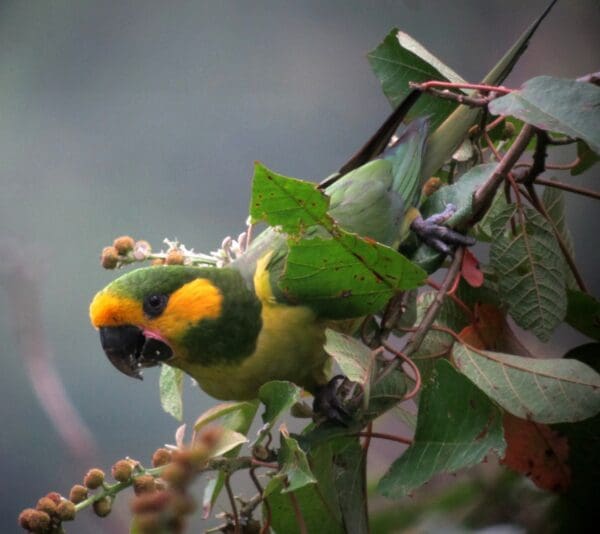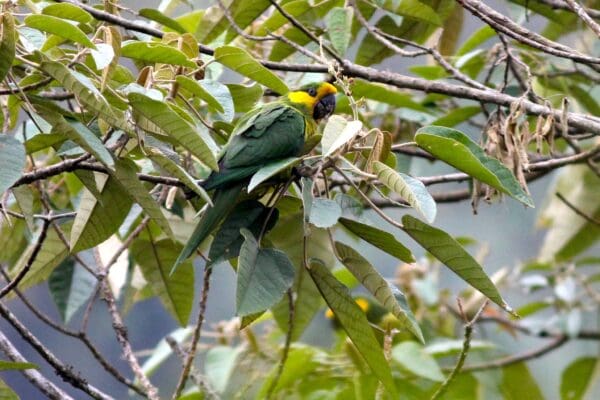Yellow-eared Parrot
Also known as:
Yellow-eared Conure or Parakeet
Also known as:
Yellow-eared Conure or Parakeet
![© Felix Uribe [CC BY-NC 2.0] via Flickr A wild Yellow-eared Conure perches in a tree](https://parrots.org/wp-content/uploads/2023/01/wpt_Yellow-eared-Parrot_1306-8-e1733168996474-100x100.jpg)
![© Francesco Veronesi [CC BY-NC-SA 2.0] via Flickr A wild Yellow-eared Conure forages for berries](https://parrots.org/wp-content/uploads/2023/01/wpt_Yellow-eared-Parrot_1306-14-100x100.jpg)
![© Arley Vargas [CC BY-NC-ND 2.0] via Flickr A wild Yellow-eared Conure flaps its wings atop a tree](https://parrots.org/wp-content/uploads/2023/01/wpt_Yellow-eared-Parrot_1306-13-100x100.jpg)
![© Arley Vargas [CC BY-NC-ND 2.0] via Flickr A wild Yellow-eared Conure feeds on vegetation](https://parrots.org/wp-content/uploads/2023/01/wpt_Yellow-eared-Parrot_1306-12-100x100.jpg)
![© Arley Vargas [CC BY-NC-ND 2.0] via Flickr Wild Yellow-eared Conures cling to entrance at nest](https://parrots.org/wp-content/uploads/2023/01/wpt_Yellow-eared-Parrot_1306-11-100x100.jpg)
![© Felix Uribe [CC BY-NC 2.0] via Flickr A wild Yellow-eared Conure feeds on berries](https://parrots.org/wp-content/uploads/2023/01/wpt_Yellow-eared-Parrot_1306-5-100x100.jpg)
![© Francesco Veronesi [CC BY-NC-SA 2.0] via Flickr A wild Yellow-eared Conure perches on a mossy branch](https://parrots.org/wp-content/uploads/2023/01/wpt_Yellow-eared-Parrot_1306-3-100x100.jpg)
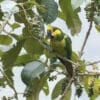
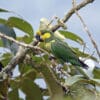
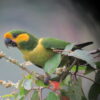
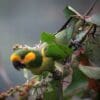
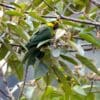
DID YOU KNOW?
The traditional roost site for Yellow-eared Conures in Ecuador has been purchased and is being re-forested so that the birds may return to this area.

Ognorhynchus

icterotis
Size:
42 cm (16.4 in)
Weight:
285 g (10 oz)
Subspecies including nominate:
one
Colour Adult:
Both adults large green parrots with long tail and heavy, grey/black beak; dark green upperparts; underparts pale green/yellow; yellow forehead, lores, upper cheeks and ear coverts; ear coverts elongated into plumes; pink/white bare skin at base of lower mandible. Eye ring bare and grey, eye orange.
Colour Juvenile:
As in adults but tail shorter and eye brown.
Call:
Unusual calls, nasal or goose-like notes given by members of group to produce far-carrying, conversational sounds.
More Information:
WPT-supported project – Yellow-eared Parrot Habitat Protection
Content Sources:
CITES
Avibase
BirdLife International
Cornell Lab of Ornithology/Birds of the World
A Guide to Parrots of the World, Juniper and Parr, 1998
Parrots: Status Survey and Conservation Plan 2000-2004, Snyder, McGowan, Gilardi and Grajal, 2000.
Parrots of the World, Forshaw, 2006. 2010 edition
Vanished and Vanishing Parrots, Forshaw, 2017.
Parrots in Aviculture, Low, 1992.
Captive Status:
Extremely rare
Longevity:
—
Housing:
—
Diet:
—
Enrichment:
—
Nest Box Size:
—
Clutch Size:
4
Fledging Age:
—
Hatch Weight:
—
Peak Weight:
—
Weaning Weight:
—
World Population:
1000 mature individuals. Local declines but overall increasing.
IUCN Red List Status:
Vulnerable
CITES Listing:
Appendix I
Threat Summary:
Suffered a severe population collapse due to habitat loss (in particular the wax palm tree, which it is dependent on for nesting) at 90-93% in Colombia. Its status in Ecuador is unclear but precarious; it may now be extinct there. Colonial nesting behaviour could make it vulnerable to trapping. Despite an overall positive growth trend, local population declines are observed at Cubarral, which decreased from 70 individuals in 2009 to fewer than ten individuals in 2020.
Range:
Found in the Andean highlands in NW Ecuador, north from Pichincha and W Cotopaxi, and W Colombia, north to Antioquia and NW Norte de Santander. Recently found only from degraded localities in Cordillera Central, Colombia, and W Cotopaxi, Ecuador.
Habitat:
Found in areas with Ceroxylon wax palm trees in upland humid mountain forest. Will tolerate partially cleared areas.
Wild Diet:
Reported to feed on Ceroxylon quindiuense and C. alpinum and possibly fruit from other species in this genus; other fruits of Sanurania and Sapium spp, and Podocarpus and Euphorbiaceae.
Ecology and Behaviour:
Generally seen in small flocks or, in the breeding season, pairs. Are highly mobile, probably in response to food availability. Active at dawn feeding, then returning to roost in mid-afternoon. Noisy and conspicuous in flight. Birds roost communally.
Clutch and Egg Size:
4 eggs
Breeding Season:
Northern Tolima: May, Huila: March, Ecuador: July-October. Nests colonially in tall wax palms.
Related Links:
